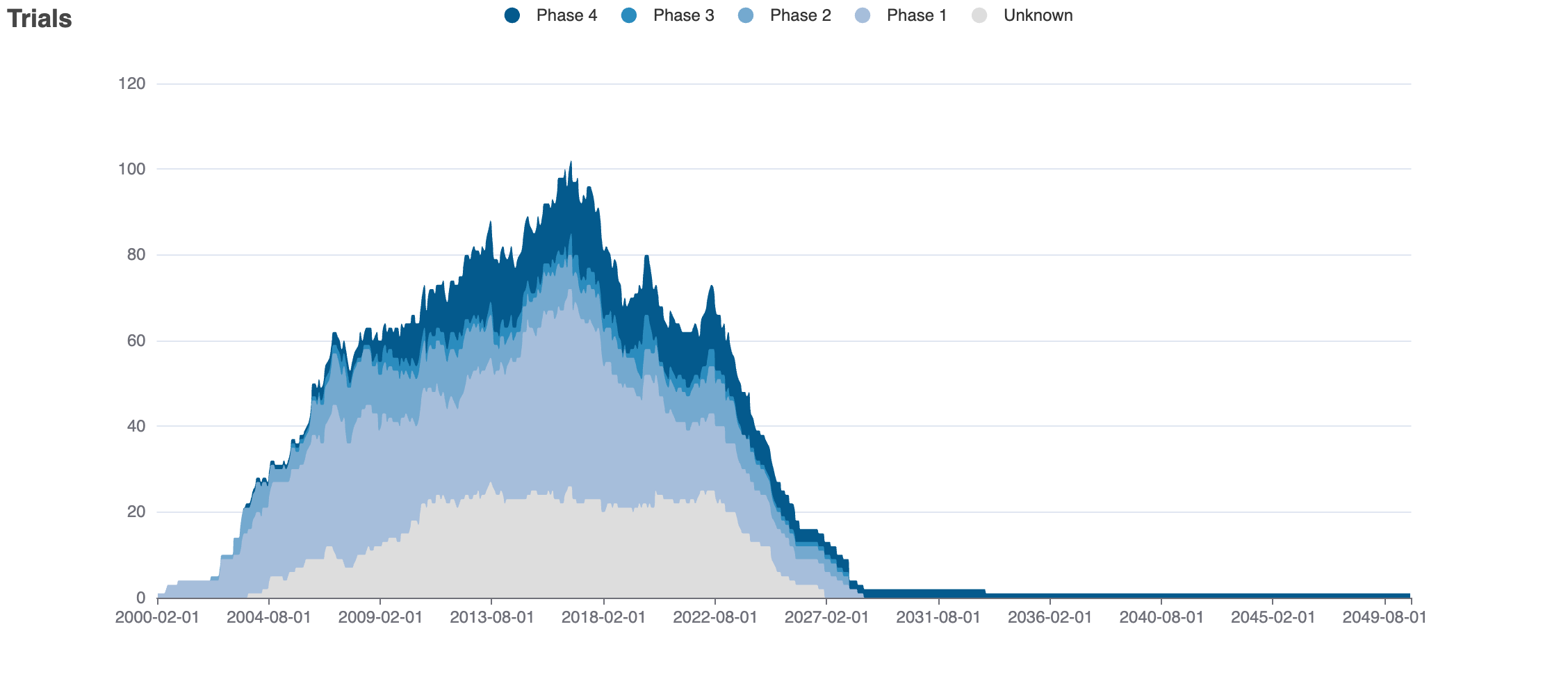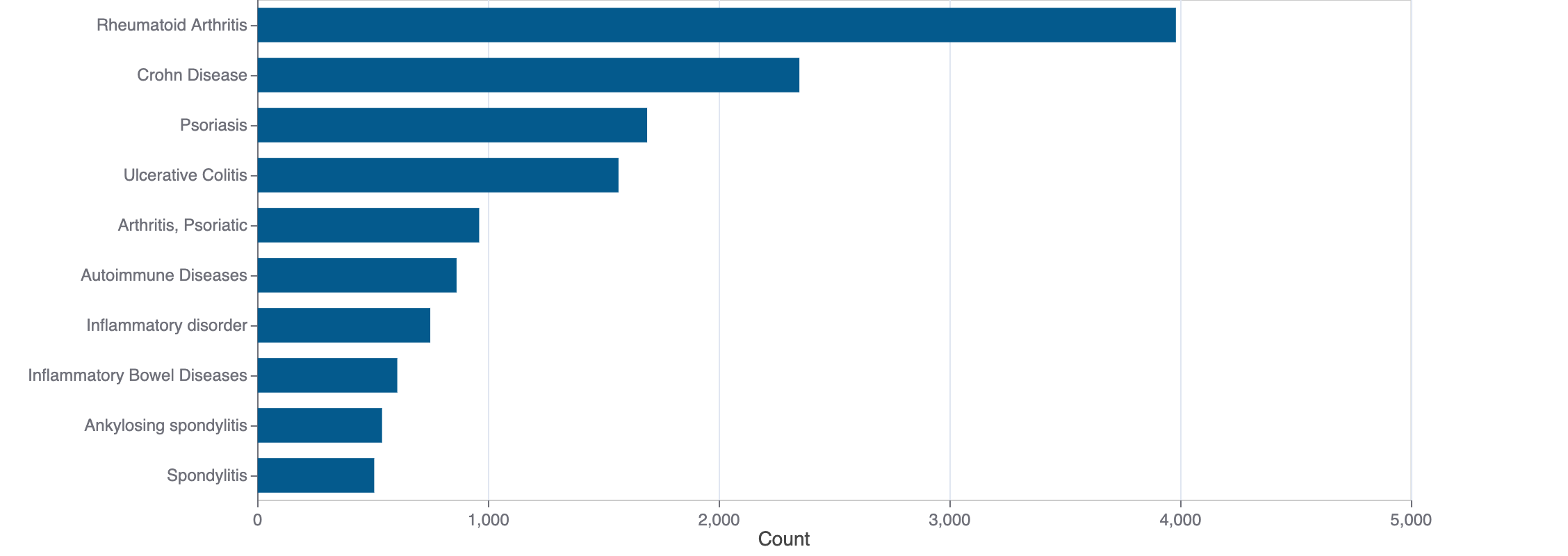FAXELADOL
Faxeladol is a small molecule pharmaceutical. It is currently being investigated in clinical studies.
Download report
Favorite
Events Timeline
Commercial
Clinical
Drug
Target
Variants
Financial
Trends
Safety
Events Timeline
5D
1M
3M
6M
YTD
1Y
2Y
5Y
Max
Events
FDA approval date
EMA approval date
Patent expiration date
Study first post date
Last update post date
Start date
Primary completion date
Completion date
Results first post date

Mock data
Subscribe for the real data
Subscribe for the real data
Commercial
No data
Clinical
Clinical Trials
3 clinical trials
View more details

Mock data
Subscribe for the real data
Subscribe for the real data
Indications Phases 4
No data
Indications Phases 3
No data
Indications Phases 2
Indication | MeSH | Ontology | ICD-10 | Ph 1 | Ph 2 | Ph 3 | Ph 4 | Other | Total |
|---|---|---|---|---|---|---|---|---|---|
| Myofascial pain syndromes | D009209 | EFO_1001054 | — | — | 1 | — | — | — | 1 |
| Fibromyalgia | D005356 | EFO_0005687 | M79.1 | — | 1 | — | — | — | 1 |
Indications Phases 1
Indication | MeSH | Ontology | ICD-10 | Ph 1 | Ph 2 | Ph 3 | Ph 4 | Other | Total |
|---|---|---|---|---|---|---|---|---|---|
| Pharmacokinetics | D010599 | — | — | 1 | — | — | — | — | 1 |
| Pain | D010146 | EFO_0003843 | R52 | 1 | — | — | — | — | 1 |
| Neuralgia | D009437 | EFO_0009430 | — | 1 | — | — | — | — | 1 |
| Chronic pain | D059350 | — | — | 1 | — | — | — | — | 1 |
| Visceral pain | D059265 | — | — | 1 | — | — | — | — | 1 |
Indications Without Phase
No data
Epidemiology
Epidemiological information for investigational and approved indications
View more details
Drug
General
| Drug common name | FAXELADOL |
| INN | faxeladol |
| Description | Faxeladol (INN, USAN) (code names GRTA-9906, GRTA-0009906, EM-906, GCR-9905, GRT-TA300) is an opioid analgesic which was developed by Grünenthal GmbH but was never marketed for medical use anywhere in the world. It is related to tramadol and ciramadol, and was developed shortly after tramadol in the late 1970s. Similarly to tramadol, it was believed faxeladol would have analgesic, as well as antidepressant effects, due to its action on serotonin and norepinephrine reuptake. In various studies in the 1970s alongside tramadol, faxeladol was seen to be slightly more potent than tramadol, but with a higher rate of sudden seizures than tramadol, which is known to cause seizures without warning in some users.
|
| Classification | Small molecule |
| Drug class | analgesics (mixed opiate receptor agonists/antagonists) |
| Image (chem structure or protein) |  |
| Structure (InChI/SMILES or Protein Sequence) | CN(C)C[C@@H]1CCCC[C@H]1c1cccc(O)c1 |
Identifiers
| PDB | — |
| CAS-ID | 433265-65-7 |
| RxCUI | — |
| ChEMBL ID | CHEMBL2103829 |
| ChEBI ID | — |
| PubChem CID | 9813414 |
| DrugBank | — |
| UNII ID | C04V6SGK8H (ChemIDplus, GSRS) |
Target
No data
Variants
No data
Financial
No data
Trends
PubMed Central
Top Terms for Disease or Syndrome:

Mock data
Subscribe for the real data
Subscribe for the real data
Additional graphs summarizing 21 documents
View more details
Safety
Black-box Warning
No Black-box warning
Adverse Events
0 adverse events reported
© 2020-2025 Collaborative Drug Discovery Inc. (CDD) | Terms of Use